
 Reports from Inside Iran
Reports from Inside Iran
Also From GM
Alan,
Just this morning I had a phone conversation with some people inside the city of Esfahan itself. Obviously they couldn't say very much since phone calls to/from the outside world are monitored by the regime.
The only thing they could tell me was that clashes have also taken place within the city itself, including gun fire. They also said: "Please pray for us!"
Alan Note: Meanwhile Islamic Regime agents and supporters claim this is all "drug smugglers" battling each other and the Regime! Not an uprising of any kind at all. Absolutely not!
The Regime has now distributed archive scenes of previously shown footage of a drug cache seized (months ago) to Iranian media and insists the clash was simply a matter that happened after FOUR people in one vehicle were stopped by authorities on a road in the area and fled.
They were then pursued into the snowy mountains of the Bakhtiari region where they ended up being killed after killing some 14 Regime Soldiers. Just a bunch of four smugglers.
The Regime story then ends up that the populace across the region (where all this - actually the tribal revolt - happened) have gone into a THREE DAY mourning period.
Sad about FOUR drug smugglers they did not even know but who happened to flee into their territory? Also the stock video footage shows hot weather not the snow and cold of Iran's mountaneous Bakhtiari region right now.
ARTICLE Armed revolt by Bakhtiari, Lor and Ghashghai tribes against the Islamic Regime has reportedly flared up. Yesterday, freedom seeking tribal fighters in the Isfahan and surrounding provinces and region began fighting local Islamic Regime forces and freeing their villages and townships from the Islamic Regime's control. The Semirom area, which is on the Ghashghai tribal migrations route, apparently saw heavy fighting and more clashes occurred in between Isfahan Province and Yassooj further south, which is the center of the Boyer-Ahmadi tribal territory. Local fighters from the various tribes, confronted Islamic Regime paramilitary forces – the IRGC (Islamic Revolutionary Guard Corps) and the Bassij (suppression forces consisting today mostly of Arab mercenaries though originally using naïve, susceptible provincials to swell their ranks). Heavy ground battles between the tribal fighters and Islamic Regime forces reportedly resulted in heavy casualties left behind by the government troops. Specially at a point around Yassooj and in the Province of Fars which was labeled the Red Line which was not to crossed by the Regime forces. In hand to hand combat, the local combatants managed to put to flight the government forces who were armed to the teeth, but had to retreat. Thousands of tribesmen took part and managed to free several villages and townships of the Isfahan Province and surrounding areas from the Islamic Regime's control. Much of the conflict stems from the Islamic Regime's on-going efforts to disarm the tribes and put religious leaders in charge of them instead of their traditional Khans. To restore morale among the Regime paramilitary forces, who had had to retreat in the face of tough resistance, leaving large numbers of Islamic Regime dead and wounded in the confrontations, the Martyrs Foundation of the Regime announced that all those killed would be added to the rolls of the Martyrs and their families would receive financial aid and support. As so often in the past, the Regime sent in troops to take revenge on the families of the tribesmen but were repulsed by the internally tough charactered tribal warriors. The mountainous terrain and the stiff resistance put up by the tribes prevented government militias from penetrating into Bakhtiari and Ghashghai tribal areas. After one their Khans had been treacherously killed by the Regime in the past, that tribe caught the spy who had been responsible, cut him in half with a chain saw and dumped his severed body on the doorstep of a local enforcement office of the Regime. The tribes have blocked off the road from Shahreza to Semirom with check points and searched all vehicles, specially those carrying persons from Isfahan or Yassooj. Only residents were allowed into the towns and villages. The tribes hope that their uprising will spread south to Shiraz and Masjid Soleiman (Khuzestan oil province) and even become a national one across the country. Towns from Semirom to Isfahan , which is only 140 kilometers away in the Ghashghai held area and all townships for about 60 kilometers toward Isfahan are in the hands of the Bakhtiari tribes. The Islamic Regime has never had much control of this area. When the Islamic Revolution of Khomeini took place back in 1979, the "hanging judge" ayatollah Khalkhali, who loved to torture cats to death for entertainment, went city to city to execute people but when he arrived in this tribal region, the residents attacked his convoy and sent him fleeing for his life but he managed to escape to go on killing. In trying to cover up what is going on, the Islamic Regime has accused the conflict of being a discord started by a band of drug smugglers and described the participants as thugs and unsavory elements from Sistan and Baluchistan moving through the tribal region as part of their smuggling operation. And confronting the Islamic Regime's anti-drug smuggling authorities. Meanwhile, in Sistan and Baluchistan the Jondollah movement continues to clash reguolarly with the Islamic Regime. NOTE: Farsi language text of a report is posted on my "Multilingual" page. (Link in left hand column).
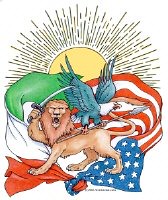
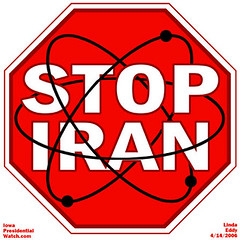

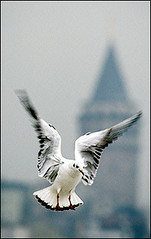



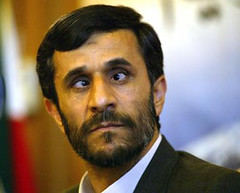

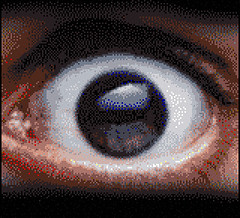

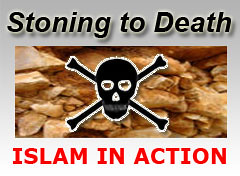

1 comment:
Well, tribal or no, there is much drug smuggling in those areas.
As far as the revolt spreading, only if someone's SOF are involved and can supply the needed weapons, ammo and support.
I don't really believe the part about the government forces retreating leaving behind many casualities, but then I didn't believe the Berlin Wall would ever be torn down.
But fighting on their own turf where they know the land and can move freely, maybe they did do some damage.
We'll see.
Papa Ray
West Texas
USA
Post a Comment